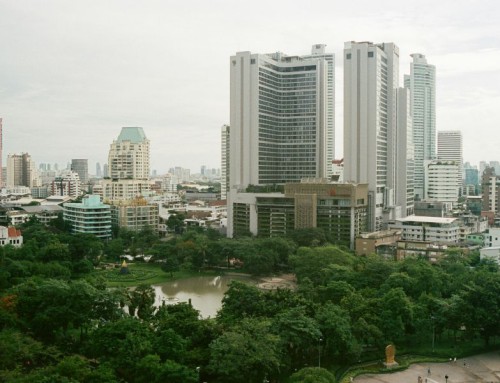Let’s say that you have been in the market looking to purchase a private property for some time and you have finally narrowed down on your dream home. It is time to make an offer on the property. It can be rather daunting but here is a guide to help break down and understand the process.
Before making an offer, the purchaser should do an ownership search on the property. There are two recommended ways to do so
- Through the Integrated Land Information System by the Singapore Land Authority https://www.sla.gov.sg/inlis
- Through the Inland Revenue Authority of Singapore website showing the owners of the latest property tax bill
There are other ways to show proof of ownership. Some may use the conservancy bills as issued by the management office. These ownership proofs are not recommended even though they satisfy most circumstances. Once the purchaser is satisfied with the ownership of the property, he can proceed to make an offer on the property to the owners as stated in the ownership checks. The next step would be to prepare the Letter Of Offer or Offer To Purchase.
The Letter Of Offer or Offer To Purchase
This document is to be prepared by the purchaser or by the purchaser’s agent. In the document, there should be the following items.
- The Property Address
- The Purchase Price
- The requested Option Period: This is typically 2 to 4 weeks but there can be special requests made by the purchaser to have a longer option period. The purchaser may need to sell his current property before exercising the option to avoid incurring Additional Buyers Stamp Duties.
- The completion period: Usually 6 to 8 weeks after the exercise of the option
- The validity of the Letter of Offer: Typically 3 days but this can vary especially if the offer needs to be made to many vendors (sellers).
- Any additional terms which the purchaser may require to be put in the Option To Purchase
The Letter Of Offer should be delivered together with the option fee. The option fee is typically 1% of the purchase price. However, the vendor may request for a larger option fee. This option fee should be paid for in the form of a cheque. The details of the cheque like cheque number and name of the issuing bank should be included in the letter of offer.
If the terms of the Letter Of Offer are accepted, the vendor can bank in the cheque. In return, he can sign the Letter Of Offer that he has accepted the terms as stated or immediately issue an Option To Purchase in accordance with the terms of the Letter Of Offer. Once the vendor has banked in the cheque, it would be deemed that he has agreed to the terms as set out by the Letter Of Offer. There are cases whereby vendors have accepted option fees and did not adhere to the terms in the Letter Of Offer. Here are some examples:
CHEW AI HUA, SANDRA V WOO KAH WAI AND ANOTHER (CHESNEY REAL ESTATE PTE LTD, THIRD PARTY)
In the Chew Ai Hua case, the two defendants were joint owners of a condominium unit in Minbu Road (the Unit) that was under construction. They engaged Chesney Real Estate Pte Ltd (Chesney) to assist them in the sale.
After the parties verbally agreed to the price of $920,000 through their respective property agents, the plaintiff made a written offer to purchase the Unit at $920,000. She did it by way of a letter sent through her property agent. The letter gave the defendants 3 days to accept her offer by delivering a signed option to purchase (to be on the terms stated in the letter) to the purchaser. It also enclosed a cheque for the $9,200 option money.
The letter of offer from the plaintiff was conveyed to a director of Chesney and an option to purchase (the Option) was prepared by one of Chesney’s staff. However, the Option was not prepared in accordance with the requirements of the letter of offer. The first defendant subsequently signed the Option on behalf of both defendants and deposited the plaintiff’s cheque into his bank account. The Option was given to the plaintiff’s property agent the day before its expiry. Unfortunately, the day of expiry was a Saturday and also the eve of the Chinese New Year. At the trial, there were differing versions as to what actually happened around this time. In any event, the plaintiff was not able to exercise the Option before its expiry.
At the end of the trial, the judicial commissioner found that:
the plaintiff’s offer to buy the Unit was accepted by the defendants through their conduct of banking in the plaintiff’s cheque and in retaining the option money beyond the deadline of the offer; this resulted in a contract for the grant to the plaintiff of an option to purchase the Unit that should comply with the requirements of the plaintiff’s offer; the Option did not comply with the requirements of the plaintiff’s offer; and consequently, the defendants had breached the contract.
JOSEPH MATTHEW AND ANOTHER V SINGH CHIRANJEEV AND ANOTHER
One of the cases that the judicial commissioner relied on was Joseph Matthew and another v Singh Chiranjeev and another [2010] 1 SLR 338. In that case, the apartment owners had emailed their property agent to say they were “taking a decision to sell” their apartment at the offered price and instructed the agent to bank in the purchaser’s cheque for the option fee but they did not sign the option.
The High Court’s finding in that case that there was a binding agreement to grant an option for the sale of the apartment even though no option had been signed by the owners was upheld by the Court of Appeal. The Court of Appeal said that the contract to grant an option for the sale of the apartment was binding when (at the latest) the option fee had been deposited into a seller’s bank account and the signing of the option to purchase was “merely a necessary part of the process of giving effect to a binding agreement (to grant an option) that had already been entered into” by the parties.
Once the offer has been accepted, an Option To Purchase (commonly referred to as OTP) will be prepared. The vendor can use the prescribed Option To Purchase from the various property agencies through his appointed agent or instruct his lawyer to draft an Option To Purchase to be delivered to the purchaser.
The Option To Purchase will include what was agreed upon in the Offer To Purchase as well as other terms. The significant ones to take note will be:
- The law firm that the option exercise fee should be delivered to
- Who that cheque should be made out to: Typically either to the “Singapore Academy of Law” or “(The Vendor’s Solicitors) law practice – CVY)
- What conditions the sale and purchase are subject to. Either the Law Society of Singapore’s Conditions of Sale 1999 or 2012.
The vendor cannot sell the property to another purchaser during the option period. He has sold the option or the right to purchase his property to the purchaser by accepting the option monies. The purchaser, on the other hand, can choose not to exercise the option or the right to purchase the property eventually.
Once the purchaser has the Option To Purchase, he should be looking for a lawyer to represent him in the sale and purchase process. He should also be looking for a bank loan if he intends to finance the property through a loan.
This is a brief scenario on how to make an offer on a private property. If you are unfamiliar with the process, you should look for an experienced real estate agent to assist you with the process.
Yours Sincerely,
Daryl Lum






